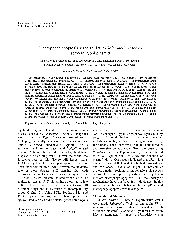摘要
The present study was undertaken to investigate the relationship between plasmid isolated from S. enterica serovar Typhi (pR(ST98)) and macrophage apoptosis. pR(ST98) was transferred into an attenuated S. enterica serovar Typhimurium strain RIA to create a transconjugant pR(ST98)/RIA. Standard S. enterica serovar Typhimurium virulence strain SR-11 was used as a positive control, and RIA as a negative one. Murine macrophage-like cell line (J774A.1) was used as an infectious cell model in vitro. In order to determine the inhibition and bactericidal effect of amikacin (AMK) to extracellular bacteria and the best optimization co-culture ratio between Salmonella and J774A.1, the minimal inhibitory concentration (MIC) and minimal bactericidal concentration (MBC) of AMK to strains SR-11, pR(ST98)/RIA and RIA and multiplicity of infection (MOD were detected first, and then J774A.1 was infected by the above three serovar Typhimurium strains. Apoptosis of J774A.1 was examined with electron microscopy and flow cytometry after annexin-V/propidium iodide labeling at 0, 1, 3, 6, 12 and 24 h. Mitochondrial membrane potential was detected by JC-1 staining method. It was demonstrated that MIC of AMK to the three strains was 10 mu g/ml, MBC was 80 mu g/ml, and optimal MOI was 100:1. pR(ST98)/RIA resulted in a higher apoptosis of J774A.1 than RIA, apoptotic features such as chromatin margination could be observed after 3 h, and death of J774A.1 cells was associated with the loss of tnitochondrial membrane potential. These results indicated that pR(ST98) could enhance the virulence of its host bacteria, evidenced by increased macrophage apoptosis.
- 出版日期2010-8
- 单位苏州大学
